This past winter, researchers from the Centre for Earth Observation Science (CEOS) at the University of Manitoba (UM) completed the first-ever controlled oil spill experiment at the Churchill Marine Observatory (CMO). This was a major milestone in a larger effort to understand how oil behaves in the Arctic, and how Arctic microbes might help clean it up.
The study is part of GENICE II, a collaborative and multidisciplinary project led by CEOS. Its goal? To better prepare for and respond to oil spills in the Arctic by combining cutting-edge technology, genomics, chemistry, and remote sensing.
Oil pollution in Arctic environments is not well understood, emphasizing the urgent need for this type of work. With climate change accelerating the loss of sea ice in Hudson Bay and the Arctic Ocean in general, the region is facing increased shipping activity, heightening the risk of oil spills.
"In order to get ahead of the challenges that come with increased transportation, we want to be able to mitigate and monitor oil spills if they do happen." shares Agoston Fischer, a CEOS technician on the GENICE II research team.
GENICE II is a continuation of the original GENICE I project launched in 2016. The project is led by Dr. Eric Collins, a Canada Research Chair in Arctic Marine Microbial Ecosystem Services. Other principal investigators working on the oil spill experiment include Dr. Dustin Isleifson and Dr. Gary Stern from CEOS and Dr. Nagissa Mahmoudi from McGill University.
The goal is to not only better understand oil spill behaviour in the Arctic and the role microbes play in its degradation, but to "establish remote sensing technologies that will better detect, characterize, and monitor oil pollution" states Durell Desmond, a CEOS postdoctoral researcher.
Oil spill simulation at the CMO
The CMO is a state-of the art facility, well equipped for this type of research. It is located on the shores of Hudson Bay and features two large pools that can be filled with natural seawater from the Churchill River Estuary. One pool serves as a control, while the other is used as an experimental pool, where oil can be added.
In November 2024, CEOS researchers began collecting baseline data from the seawater pools. By early December, they introduced 113 litres of diesel, the same type of fuel oil that is commonly used by ships in the region, under the ice in the experimental pool. Over several weeks, the team of chemists, microbiologists, and remote sensing experts monitored how the diesel moved, changed, and was broken down.
Tracking microbes in real time
One of the key research components is to better understand how Arctic microbes respond to oil pollution. Using portable DNA sequencing devices, microbiologists can determine the relative abundance of oil-degrading microbes before, during, and after the spill simulation.
"After the diesel addition, we expect to see oil-degrading microbes increase, then as the nutrients become limiting and the diesel breaks down, the oil-degrading microbes should start to decrease" shares Jocelyn Plouffe, a CEOS microbiologist. "Once the baseline microbial community returns, it is a good indication that most of that oil has been biodegraded."
The portable DNA tools, about the size of a smartphone, provide nearly instant results. Researchers hope this technology could one day be used by northern communities to monitor local water quality in the event of a spill.
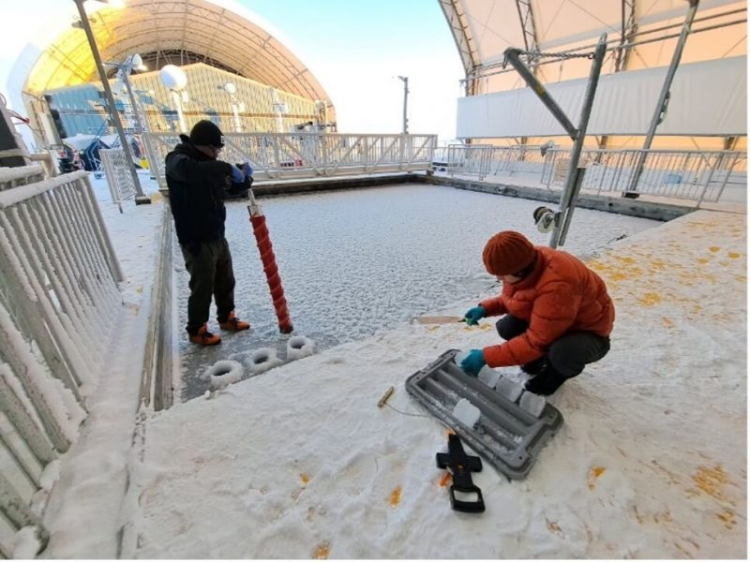
Taking ice core samples from the control seawater pool. Photo credits: Jocelyn Plouffe
Chemical clues and remote detection
CEOS chemists also used mass spectrometry to analyze and identify aerosols and volatile compounds released by the diesel. These chemical profiles can then be compared to shifts in microbial populations.
Meanwhile, remote sensing experts deployed radar and LiDAR systems to detect changes in the ice's physical properties. Oil rising through the ice altered its temperature, salinity, and surface roughness, signals that radar systems were able to pick up days before the oil became visible on the ice surface.
This could be crucial for improving satellite monitoring tools. "Satellites only capture large scale pollution events, and by that time it might be too late" explains Mahdi Zabihi Mayvan, a CEOS PhD candidate. "We can calibrate satellites with these ground-based systems, allowing us to detect spills quicker and at a smaller scale."
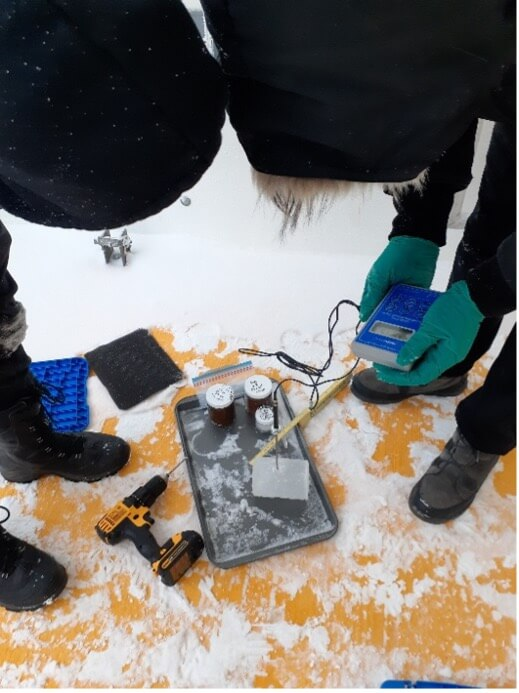
Researchers taking temperature of an ice core. Photo credits: Agoston Fischer
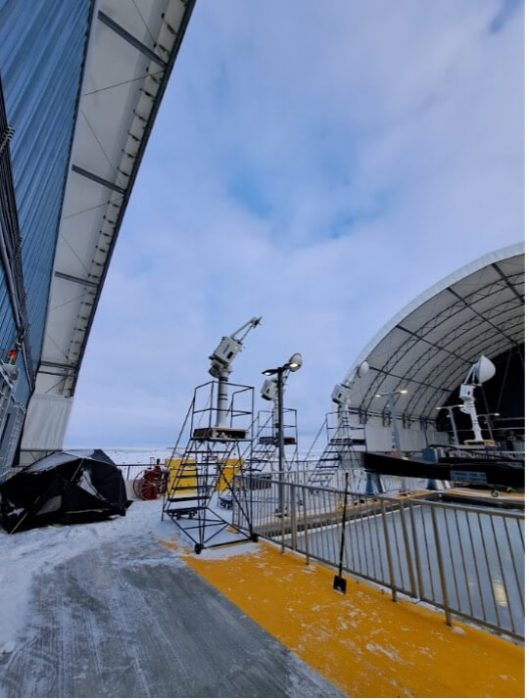
Ground-based remote sensing systems set up next to the mesocosm. Photo credits: Agoston Fischer.
Science in sub-zero conditions
Fieldwork at the CMO came with its challenges. Researchers faced long hours outdoors in cold and windy conditions, wearing hazmat suits and respirators to safely conduct their experiments.
Despite the harsh environment, which led to occasional equipment malfunctions, the team managed to adapt. "It was definitely a learning experience," says Lisa Oswald, a CEOS technician. "But I think we will be well prepared when we go back."
With the knowledge gained from this experiment, the team hopes to build on it and make some improvements for next time.
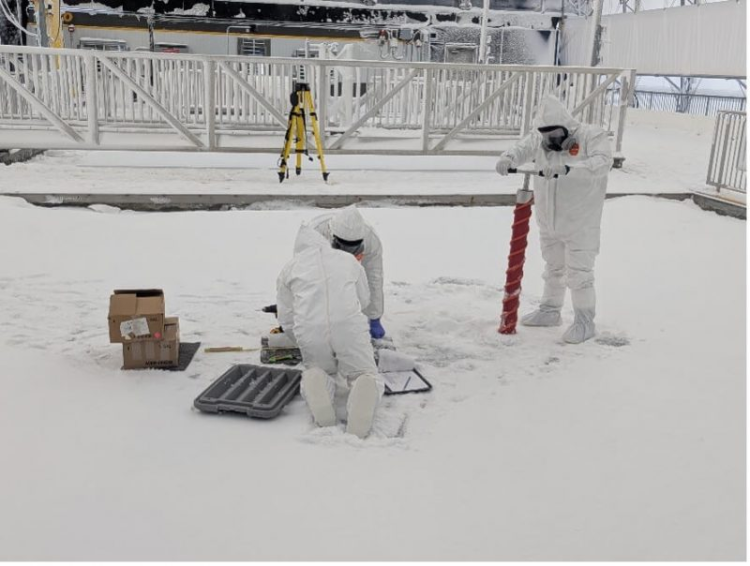
Sampling on the experimental pool after oil spill simulation. Photo credits: Lisa Oswald.
Looking ahead
This inaugural experiment is just the beginning. The GENICE II team plans to return to the CMO again this winter to test different spill scenarios and gather more seasonal data.
As for now, the research team is working hard to analyze and process their data from this past winter.
"We went to Churchill as individual scientists" says Mahdi. "But we left as a team."
With the success of this first-of-its-kind experiment, GENICE II is proving that collaborative research is essential to protecting Arctic environments in the face of growing climate and industrial pressures.
The project is funded by Genome Prairie and Genome Canada, along with the University of Manitoba, McGill University, and several other partners and collaborators.
To learn more about the GENICE II project visit GENICE II
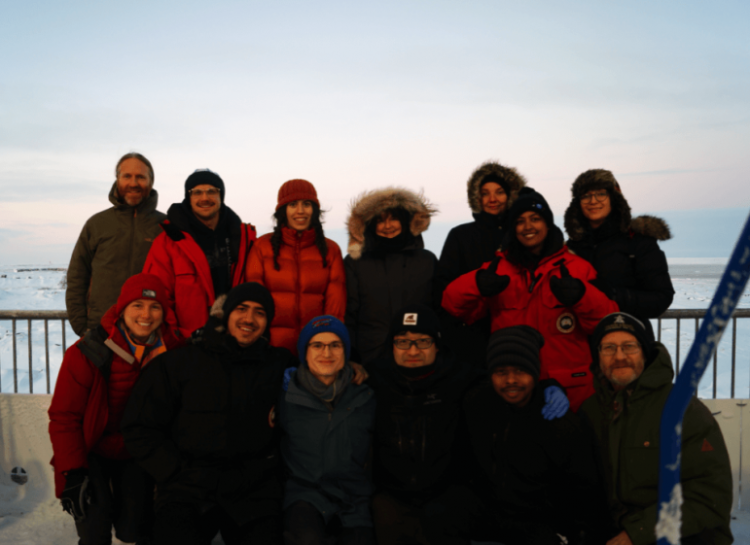
Group photo of the GENICE II team at the Churchill Marine Observatory. Photo credits: Jocelyn Plouffe.









